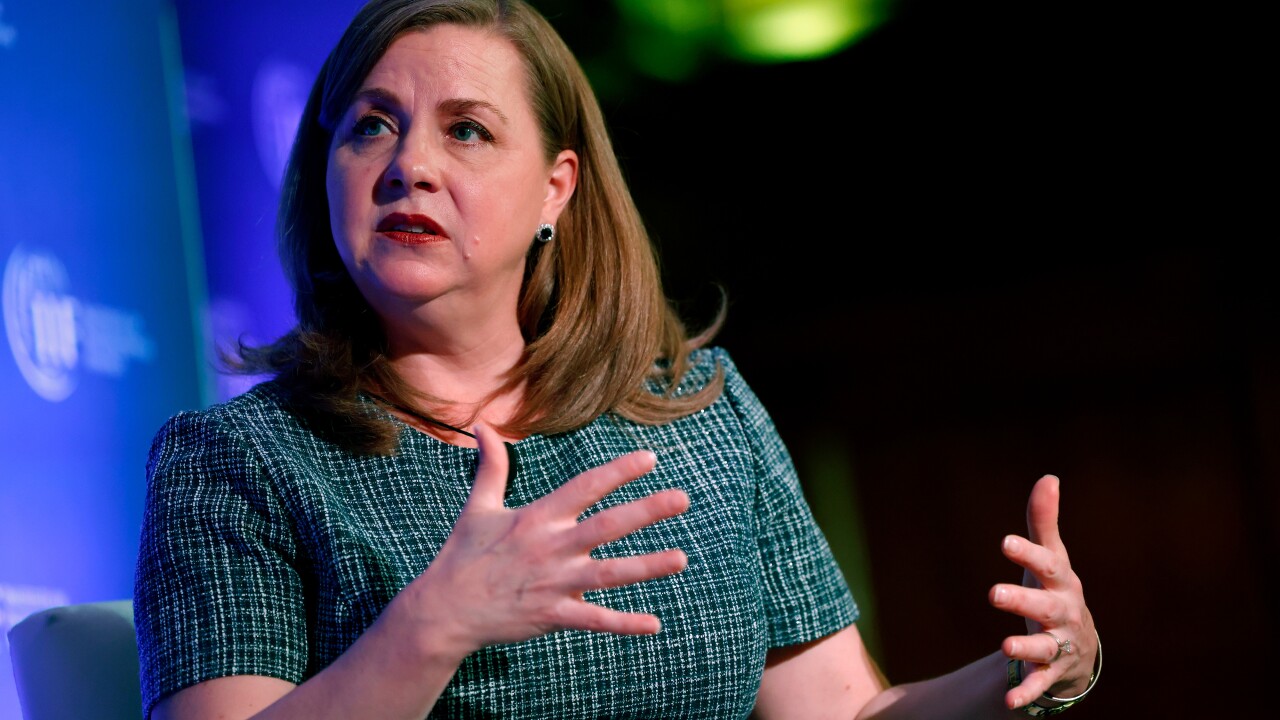Plenty has been written about how banks ignore small businesses, obsessed as they are with keeping the biggest corporate clients happy, even though demands for better pricing of cash management services makes these big accounts less profitable. Indeed, according to the recently released Ernst & Young Cash Management Survey, revenue at banks grew a measly 1.5 percent last year.
What has gone comparatively less discussed is how much banks are ignoring the vast middle-market companies with revenue between $20 billion and $500 billion. Because of the lower transaction volume generated by such business for cash management services and the fact that their still respectable size demand many customized features, banks have often given them short shrift.
This is something that Bank One is committed to changing, according to Kathleen Nugent, svp and head of product development. Through a collaboration with Microsoft Business Solution's Great Plains enterprise resource planning solution, the bank is looking to bring more cash management services efficiently and at a lower cost to its 20,000 middle-market customers.
"The middle market is a large and important segment, and particularly in treasury services and cash management we're making a concerted effort at creating a middle market solution," she says. "We've learned that building for a larger customer and scaling to the middle market doesn't always work."
The Bank One approach is fundamentally different from past attempts to serve the market, Nugent says, since instead of creating a product that clients must build to, the bank is leveraging the technology investments clients have already made and adding bank services.
In this case, Bank One and Great Plains share 700 common customers. "Our customers that are on board like that fact that they don't have to change their technology," she says."In the past, customers would've been required to map into what we'd done, but that's not cost effective for the middle market, which does not have a lot of idle IT resources."
This kind of creative thinking is a must if the industry is to have any chance of moving growth beyond 1.5 percent, says Maggie Scarborough, an analyst at Financial Insights, who recently wrote a report, "Integrating the Middle Market: Bank One and Microsoft Great Plains."
In it she writes, "The state of the cash management market indicates that middle market and smaller companies, accounting for 50 percent of revenue, need some serious attention or they too will be responsible for further market declines."
Creativity in approaching this fickle market seems to be a key strategic element for banks eager to crack it. "These are the businesses that are propping up revenue as large corporations negotiate for better and better price breaks," she writes. "To preserve and grow revenues, treasury management banks must be creative in the middle market services. Adding value is key. On the loyalty front, they must find a cost-efficient means to integrate bank and customer processes; on the revenue front, they must use this integrated channel for the delivery of new services."
Scarborough puts the size of the middle market at about 93,000 in the United States, and the partnership between Bank One and Microsoft is perhaps a turning point in the way banks approach the middle market, she says. Microsoft executives declined to be interviewed.
Called Integrated Cash Management Solutions by Bank One, businesses can now use and automate numerous cash management functions, including the transfer of electronic payments, check payment, electronic collections and receivables reporting, helping to eliminate time-consuming administrative tasks. The collaboration is significant, Scarborough says, in that it puts aside fears of disintermediation, even if it means partnering with Microsoft.
Halfway through a survey of the top 20 banks, she found that six were putting a middle-market integration strategy at the top of their to-do list. "Philosophically, banks seem to be aligning in their strategic approach to the middle market," she says. In her report, she writes, "If a bank is smart like Bank One, it can leverage mammoth channel partners such as Microsoft to its own advantage."
The Microsoft Business Solutions team developed and coded the solution, while the Bank One team tested it. Together they came up with a phased plan to make the project a reality. The first phase was to enable the straight-through processing of files typically transmitted from or to the bank through the bank IT queues, or downloaded or uploaded by business clients through Bank One's Treasury Management Internet desktop. Nugent says the bank is currently marketing this to customers.
Given the merger between JPMorgan Chase and Bank One, the second phase of the plan- integrating the solution with Bank One's on-line banking services-has been put on hold, Nugent says. No specific timetable has been set yet, she says.
Scarborough says it will be interesting to see how Microsoft leverages the experience of this project. Because of the significant customization necessary for Bank One, she questions how "repeatable" the implementation is. "But knowing Microsoft, they will take it to the next level and make the suite highly adaptable and integratable," she points out.





